The Samsung Galaxy S24 Ultra is indisputably one of the best Android phones you can buy in 2024. It has great cameras, one of the biggest and brightest displays, a slick titanium and glass design, and the unique proposition of a stylus that can be used to activate the nifty AI features. However, the freshly announced Google Pixel 9 Pro XL challenges its authority with an equally stunning display, stellar cameras, and exclusive Gemini AI features.
Can all of these new features on the Pixel 9 Pro XL match the Galaxy S24 Ultra’s charm? Let’s find out in our comparison below.
Google Pixel 9 Pro XL vs. Samsung Galaxy S24 Ultra: specs
| Google Pixel 9 Pro XL | Samsung Galaxy S24 Ultra | |
|---|---|---|
| Size | 162.8 x 76.6 x 8.5 mm (6.4 x 3.0 x 0.3 inches) | 162.5 × 79 × 8.6mm (6.40 x 3.11 x 0.34 inches) |
| Weight | 221 grams (7.8 ounces) | 233 grams (8.22 ounces) |
| Screen | 6.8-inch Super Actua LTPO
1344 x 2992 pixels 1-120Hz Dynamic refresh rate HDR10+ 3,000 nits peak brightness Corning Gorilla Glass Victus 2 |
6.8 inches LTPO OLED
1440 x 3120 pixels 1-120Hz dynamic refresh rate HDR10+ 2,600 nits peak brightness Corning Gorilla Glass Armor protection |
| Operating system | Android 14 | One UI 6.1 based on Android 14 |
| RAM & Storage | 16GB + 128GB UFS 3.1
16GB + 256GB UFS 4.0 16GB + 512GB UFS 4.0 16GB + 1TB UFS 4.0 |
12GB + 256GB UFS 4.0
12GB + 512GB UFS 4.0 12GB + 1TB UFS 4.0 |
| Processor | Google Tensor G4 | Qualcomm Snapdragon 8 Gen 3 |
| Camera | Triple rear cameras: 50-megapixel primary, f/1.68 aperture, 1/1.31-inch sensor size, OIS, 48MP ultrawide, f/1.7, 123° field of view, and 48MP telephoto, f/2.8, 5x optical zoom, 1/2.55-inch sensor
42MP selfie camera, autofocus, 123° field of view |
Quad rear cameras: 200MP primary, f/1.7, 85° FOV, OIS, 12MP ultrawide, f/2.2, 120° FOV, 10MP portrait telephoto, 3x optical zoom, f/2.4, and 50MP periscope telephoto, 5x optical zoom, f/3.4
12MP selfie camera |
| Video | Rear: Up to 8K@30fps or 4K@60fps
Front: Up to 4K@60fps |
Rear: Up to 8K@24fps, 4K@60fps, or 1080p@240fps
Front: Up to 4K@60fps |
| Connectivity | Bluetooth 5.3
5G Wi-Fi 7, triple-band UWB NFC |
Bluetooth 5.3
5G Wi-Fi 7, dual-band UWB NFC |
| Ports | USB-C (USB 3.2) | USB-C |
| Water resistance | IP68 | IP68 |
| Battery & charging | 5,060mAh
37W wired charging 23W wireless charging Reverse wireless charging |
5,000mAh
45W wired charging 15W wireless charging Reverse wireless charging |
| Colors | Obsidian black, Porcelain white, Hazel green, Rose Quartz pink | Black, gray, violet, yellow |
| Price | Starting at $1,099 | Starting at $1,300 |
Google Pixel 9 Pro XL vs. Samsung Galaxy S24 Ultra: design

Both the Pixel 9 Pro XL and the Galaxy S24 Ultra received meaningful design upgrades over their predecessors. Since the Pixel 9 Pro XL is newer, it feels fresher, and those new green and pink colors solidify that impression further. In contrast, the Galaxy S24 Ultra has a wider range of color options, including three online-exclusive pastel colors.

The Pixel 9 Pro XL gets its tall figure from a 6.8-inch display that is a tad bigger than the Pixel 8 Pro. Incidentally, the Galaxy S24 Ultra also has a 6.8-inch display, but both phones vary slightly in their overall lengths and breadths. The Pixel is lighter by at least 10 grams (0.3 ounces), but you would hardly notice that difference, especially while using a case.
Both phones feature glass backs, though the Galaxy S24 Ultra’s has the more durable Gorilla Glass Armor protecting it while the Pixel 9 Pro XL uses the older Gorilla Glass Victus. Both also have IP68 ratings for similar resistance to dust and water. Another defining difference is the mid-frame, with Samsung walking the same route as Apple and opting for titanium while Google uses recycled aluminum.
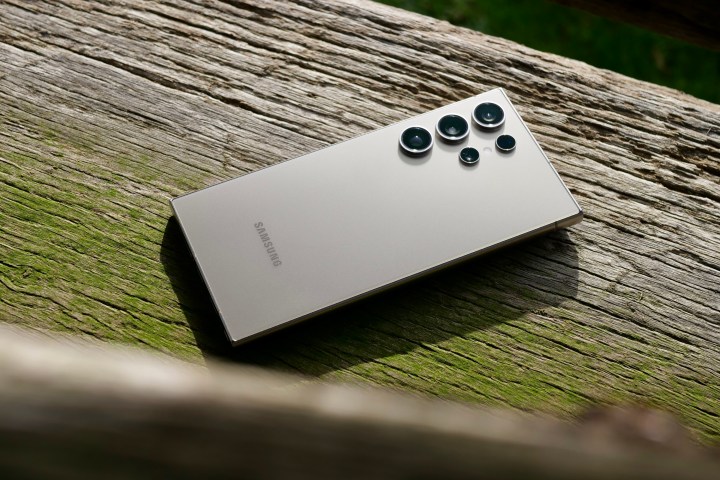
The Galaxy S24 Ultra is designed differently than the rest of Samsung’s lineup, with sharp corners, a flat back, and cameras aligned in an F shape. The Pixel 9 Pro XL, on the other hand, gets curved corners — similar to the rest of the Galaxy S24 series. Like the Galaxy S24 Ultra, Google also ditches curved edges on the screen and the rear, and has a similarly flat frame. The standout feature of the Pixel 9 Pro XL is its newly designed camera bump, which houses three cameras and all the sensors in a single row.
With both phones offering equally high-grade build quality, choosing a clear winner would be difficult. We leave this until we’ve used both the phones simultaneously for a longer duration.
Winner: Tie
Google Pixel 9 Pro XL vs. Samsung Galaxy S24 Ultra: display

Though both have 6.8-inch OLED displays, there are differences setting them apart. First, the Galaxy S24 Ultra has a slightly higher resolution, which makes details on the display a little more crisp, though you can scale the resolution back to 1080p on both phones to save battery. The display on the Galaxy S24 Ultra is also slightly broader (in line with its broader body).
The Galaxy S24 Ultra features the brightest display on a Samsung device yet, reaching as high as 2,600 nits of peak brightness. The Pixel 9 Pro XL surpasses that, reaching 3,000 nits of peak brightness and 2,000 nits in HDR mode.
While both companies boast of bright displays, neither talks about how dim the phones are in dimmer settings. Notably, Samsung has an ultra-low brightness mode to reduce strain at night. However, at the hardware level, it chooses a counterintuitive approach of using a low pulse width modulation (PWM) frequency that can lead to eye fatigue and potentially even sickness. Unfortunately, the Pixel 9 Pro’s display has yet to be tested for these standards, but tests from the previous generation show much poorer results.

After looking at the differences, let’s look at the similarities between the displays on the two phones. Both devices support dynamic refresh rate, ranging between 1Hz and 120Hz, which changes in sync with the content being played on the screens. Both also support HDR10+ while lacking support for Dolby Vision. That shouldn’t matter since both phones have super-bright displays. As Samsung (also the licensor of HDR10+) is getting more video platforms to support the codec, you wouldn’t have a problem with visibility in HDR content, though viewing on Netflix could be an issue.
Given the similarities, it is difficult to pick a straight-up winner, so we will let this be another tie.
Winner: Tie
Google Pixel 9 Pro XL vs. Samsung Galaxy S24 Ultra: performance

Like the previous three generations, the Pixel 9 Pro XL is running off of Google’s own Tensor line of mobile chips. Tensor G4 is the latest edition in the series, and like previous generations, is based on the Samsung Exynos 2400 chipset. But instead of completely carrying the chip forward with the same specifications, Google has cut down on power by reducing CPU cores from 10 to eight and has instead prioritized efficiency. As a result, the Tensor G4 brings only a small jump in the CPU’s performance.
These changes could potentially help the Tensor G4 run less hot compared to the previous generations, which have gained a poor reputation for their thermal performance. For now, we would recommend against going for the Pixel 9 Pro XL if you want a phone to game on. Another reason for that is a weak (read: midrange-worthy) Mali GPU instead of the Immortalis branded graphics unit we find on the Dimensity 9300 or other comparable chipsets.

Google has also upgraded the RAM on all variants to 16GB from 12GB in the previous generations. Notably, part of the RAM on the phone (and Google does not specify how much) is reserved for faster processing of on-device AI tasks. In terms of storage, Google offers four variants, starting at 128GB and going all the way up to 1TB. One thing to note is that the base variant comes with a slower UFS 3.1 storage technology, while the other variants have the latest UFS 4.0.
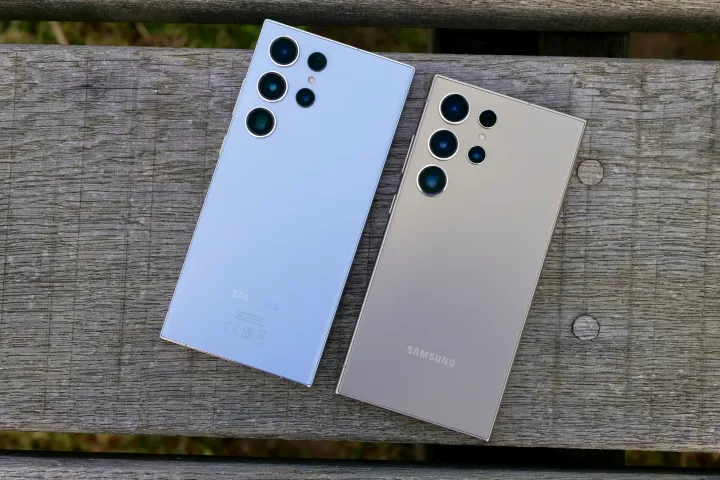
Though Samsung helps Google with the chipset, it, ironically, uses a Qualcomm Snapdragon 8 Gen 3 chipset on the Galaxy S24 Ultra. Notably, the Galaxy S24 and S24 Plus come with the Exynos 2400 in certain regions, but not in the U.S., where Samsung uses Snapdragon chips.
That’s a good thing though, as the Snapdragon 8 Gen 3 offers better thermal efficiency. It is also expected to offer much more power than the Tensor G4, thanks to a CPU designed with high-frequency mid cores. Since the beginning of the year, the Snapdragon 8 Gen 3 has consistently performed outstandingly well, so there’s hardly any reason compelling enough to doubt its performance. What we can question, however, is Samsung sticking to 12GB of RAM.
On the positive side, the Galaxy S24 Ultra comes with a 256GB of storage as the base variant and also goes up to 1TB. Additionally, there are no cutbacks in the storage speeds.
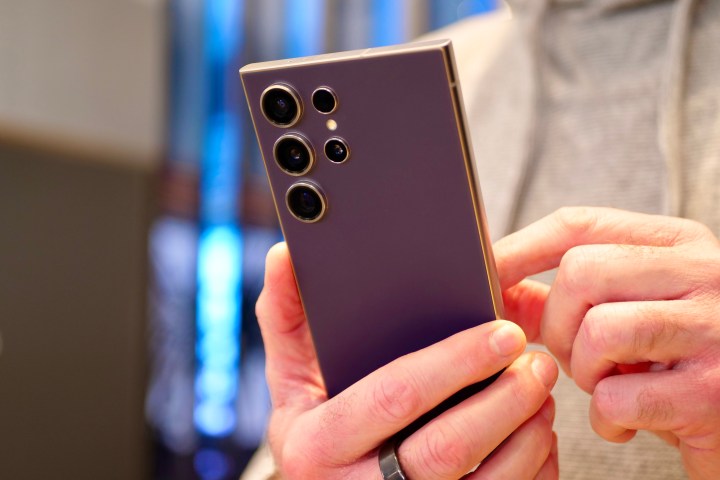
With the Snapdragon 8 Gen 3, the only downside you’re going to face is comparatively slower responses with AI functions running locally. Considering AI on mobile phones is itself in a nascent stage at the moment, that isn’t immediately an issue, though it can be in the future when we have more advanced models. That future, however, is not imminent, so you can continue using the phone over the next two to three years without any issues.
With these things in mind, we will give a point to the Galaxy S24 Ultra for the possibility of better performance, though we promise to revisit this again after our Pixel 9 Pro XL review.
Winner: Samsung Galaxy S24 Ultra
Google Pixel 9 Pro XL vs. Samsung Galaxy S24 Ultra: battery and charging

The Google Pixel 9 Pro XL and the Samsung Galaxy S24 Ultra have nearly identical batteries. There’s a 5,060mAh battery pack on the Pixel 9 Pro XL and a 5,000mAh unit on the Galaxy S24 Ultra. With the high battery efficiency offered by the Snapdragon 8 Gen 3, we received up to two days of battery backup during our review of the Galaxy S24 Ultra. It’s difficult to confirm whether the Pixel 9 Pro XL matches these high standards before a thorough analysis in the coming weeks, but we expect it to at least last longer than a day absent strenuous tasks such as continuous video recording or gaming.
One area we don’t expect the Pixel 9 Pro XL to match up to Samsung is in terms of charging speeds. The new XL supports wired charging at up to 37 watts — the fastest in its entire lineup — while the Galaxy S24 Ultra charges at up to 45W. We have yet to test the real-life charging speeds on the Pixel 9 Pro XL, but a Galaxy S24 Ultra takes slightly over an hour with a charger that supports 45W or faster charging.

Notably, the Pixel 9 Pro XL has faster wireless charging rates and can accept charge at up to 23W. Meanwhile, the Galaxy S24 Ultra only tolerates wireless charging at 15W. Considering the wider Qi2 standard for wireless charging is limited to only 15W, you would need a proprietary charger with the Pixel 9 Pro XL — probably the Pixel Stand Gen 2 from almost three years ago — to achieve those faster speeds. Finally, it’s important to note that actual wireless charging speeds are much lower due to the extensive heat generated in the process.
Lastly, both phones support reverse wireless charging where you can place accessories such as earbuds cases on the back of the phone to pump some charge into them. You can also do it to other phones, though the rate is incredibly slow and may not be effective. Google does not reveal the exact speeds here, but the transfer is limited to 4.5W on the Samsung phone.
It’s another tie between the two behemoths, but we will revise this section after testing the actual battery backup of the Pixel 9 Pro XL.
Winner: Tie
Google Pixel 9 Pro XL vs. Samsung Galaxy S24 Ultra: cameras

The Google Pixel’s cameras is one area where Google’s phones have never faltered, despite other misadventures. While it’s no longer the sole brand to offer exceptional phone cameras, it has its own set of advantages with really sharp images and true-to-life tones, especially while capturing human faces.
The Pixel 9 Pro XL continues to use a triple camera setup that’s similar to what we saw on the last generation. This includes a 50-megapixel (MP) main camera, a 48MP ultrawide with a 123-degree-wide field of view, and a 48MP telephoto with 5x optical zoom. Though the other two cameras appear unchanged, the ultrawide has a new lens with a wider aperture, which should allow better-lit shots. The ultrawide can also be used to capture macro shots, thanks to autofocus and optical image stabilization (OIS) features, which are also standard across the three cameras.
The selfie camera on the Pixel 9 Pro XL gets a major improvement, moving up from 10.5MP previously to 42MP with a significantly wider 103-degree view. The front camera also supports autofocus.
Although there isn’t a significant improvement in the hardware, there are a lot of AI features to make the offerings more exciting. In addition to the previously available Magic Editor and Best Take, Google is adding a new “Add Me” feature that allows you to add people to existing images, almost making it look like they were actually part of the photo. The 5X telephoto camera, on the other hand, uses AI to improve details in shots at up to 20X zoom with the Super Res Zoom feature.
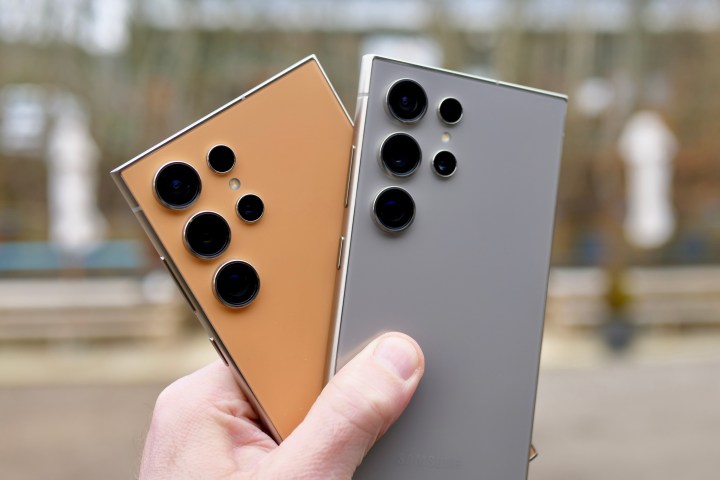
In comparison, the Galaxy S24 Ultra isn’t less packed when it comes to camera features. Foremost, you get four cameras instead of three, with Samsung opting for two telephoto cameras: a 10MP 3X for portraits and another 50MP 5X for longer-range shots with some AI-backed enhancements. The other cameras include a 200MP primary camera and a 12MP ultrawide unit. On the front, the Galaxy S24 Ultra gets a 12MP shooter.
In addition to enhancements with AI, Samsung’s One UI 6.1.1 brings the ability to doodle to generate elements on existing images. Though the feature is limited to the Galaxy Z Fold 6 and Flip 6 at the moment, there is no reason why Samsung wouldn’t bring it to other phones with an S Pen, especially the Galaxy S24 Ultra.
Though we are still testing the Pixel 9 Pro XL’s cameras, it already has tough competition to beat. The Galaxy S24 Ultra renders excellent shots in bright scenarios, though it can introduce excessive HDR in low-light images — and that’s standard across all sensors. This section deserves a more detailed head-to-head comparison, and we will be sharing the results over the coming weeks.
Winner: Tie
Google Pixel 9 Pro XL vs. Samsung Galaxy S24 Ultra: software and updates

In past years, Pixel phones have been bearers of the latest Android versions. But that changed this year, as Google launched the Pixel 9 Pro XL with last year’s Android 14 instead of the upcoming Android 15. The exact reason for this choice remains unclear, but it could have to do with Google’s shift of focus toward AI, specifically Gemini, which powers a host of new experiences on the Pixel 9 phones.
With that said, the Pixel 9 series, including the Pixel 9 Pro XL, will be the first to get Android 15 whenever it releases over the coming months. And like the older phones, the Pixel 9 Pro XL is also promised to get seven years of software updates.

These features include Gemini Live, a conversation mode that takes a more natural route where you can make multiple requests at once — you can even interrupt it while it is answering. Additionally, there’s Pixel Screenshots, which stores context related to your screenshots and scans their contents, making it easier for you to search screenshots within Google Photos.
With the Pixel 9 series, Google is offering a complimentary Google One subscription for one year, along with 2TB of storage and access to Gemini chatbot’s paid tier powered by the Gemini 1.5 Pro AI multimodal model. However, after one year, you will have to pay $20 a month to continue using the service.
In comparison, the Galaxy S24 Ultra runs a heavily skinned version of Android 14 with Samsung’s One UI. There are a lot of extra features that make One UI visually more attractive, but you will lose out on the Pixel-exclusive AI features. Samsung has its own set of Galaxy AI features, though not all of them may be entirely useful on a daily basis. These include the popular Circle to Search, which can be used to search anything by circling it with the S Pen. The feature relies on Google Lens, so it’s not exclusive to Samsung.
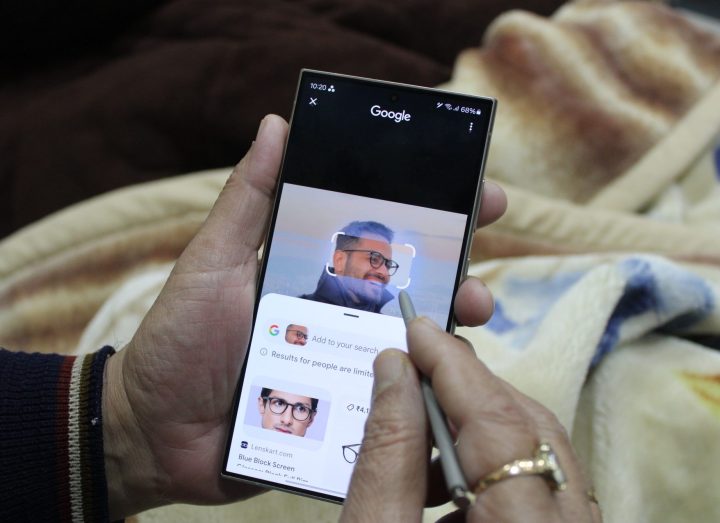
A nifty AI feature on Samsung phones is live translation during calls along with transcription. Samsung also offers its own set of image-editing features in its Gallery app and AI writing assistance for chat and email apps. Notably, Samsung’s AI features are also free only until the end of 2025, and the exact cost will be revealed afterward.
Samsung is set to release One UI 7 following the launch of Android 15, and it has been rumored to bring some massive visual changes. Finally, the Galaxy S24 Ultra is also set to receive seven years of software updates.
Both Samsung and Google have excellent track records of keeping devices up-to-date, but the plethora of AI features on Pixels give them an edge. More importantly, Google claims to be repositioning Android to revolve around AI in the coming years, and the Pixel phones will naturally get an advantage over other brands. For this reason, we choose the Pixel as our winner.
Winner: Google Pixel 9 Pro XL
Google Pixel 9 Pro XL vs. Samsung Galaxy S24 Ultra: price and availability
The Google Pixel 9 Pro XL, along with the rest of the lineup, is currently available for preorder and will start shipping August 22. It starts at $1,099 for the 128GB model, but we recommend spending $100 extra and going for the 256GB variant. Not only do you get more storage, but it’s also faster to access.
Google also has some attractive trade-in offers of up to $760 if you exchange your old phone during the preorder period, alongside a $200 Google Store credit that you can use towards buying any other product.
Meanwhile, the Galaxy S24 Ultra starts at $1,300 for the 256GB variant and rises to $1,660 for the 1TB option. Samsung has trade-in discounts up to $750 if you have an older Samsung device and up to $600 for non-Samsung phones, such as a Pixel or an iPhone.
Google Pixel 9 Pro XL vs. Samsung Galaxy S24 Ultra: verdict

The Pixel 9 Pro XL is one of the most attractive devices Google has released in several years. Besides an pleasing design and great cameras, the AI features mean it’s very close competition with the Galaxy S24 Ultra.
If you are looking to make use of the exciting preorder benefits, you can weigh the differences between the two devices based on the detailed comparison we have drawn above. Our initial impressions of the Pixel 9 Pro XL have been very promising, and we will refine the arguments above as we progress with our review.
Until then, you can make the best decision by choosing the traits that matter to you the most. At the moment, too much is unknown about the Pixel 9 Pro XL’s performance to make a great judgement. But on the other hand, it’s clear that both of these phones are exceptionally powerful and capable pieces of technology. Really, you can’t go wrong with either.
Services Marketplace – Listings, Bookings & Reviews